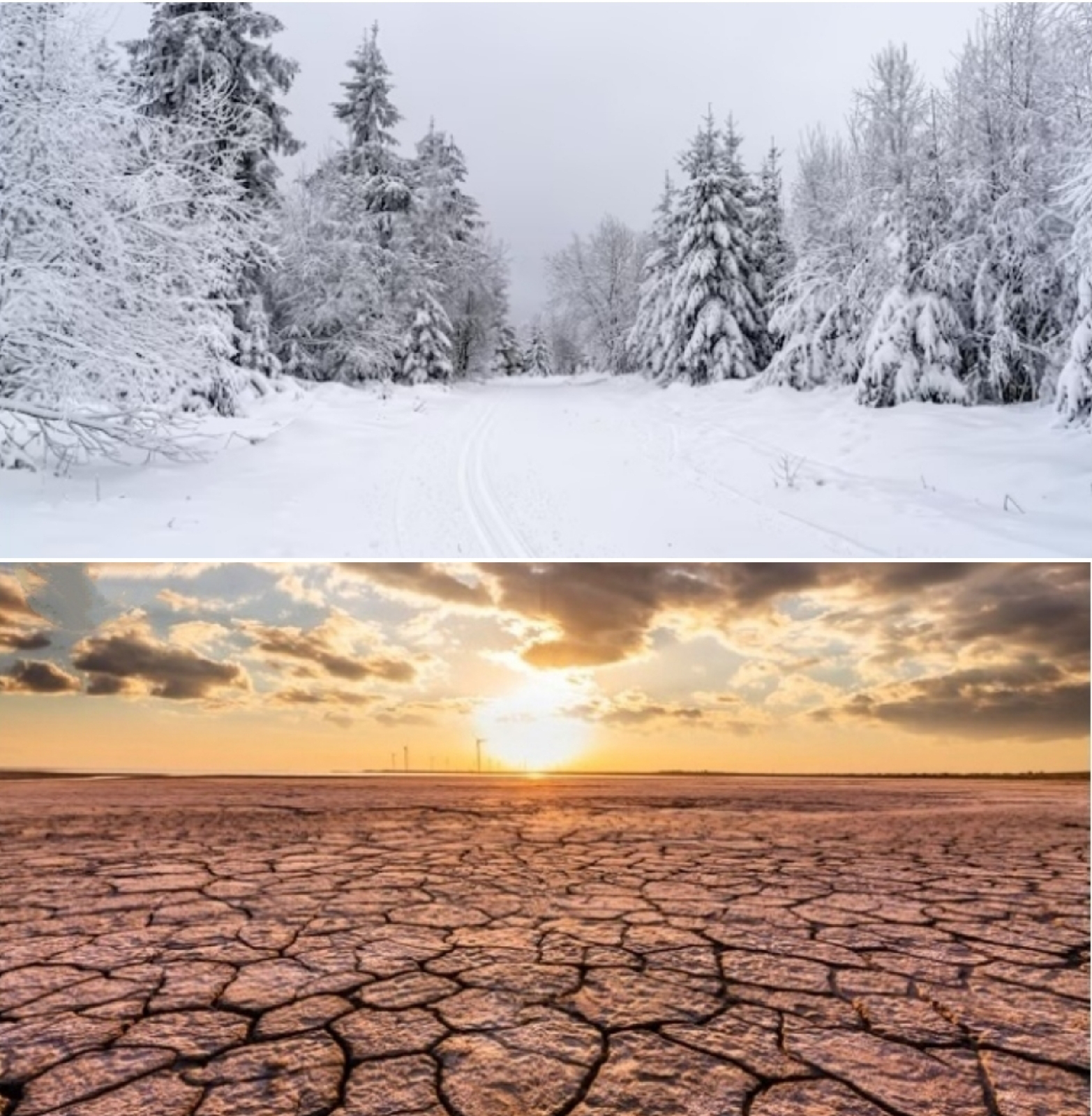ENSO: El Niño vs. La Niña
🟣 El Niño :
🔘 Warming Phase of El Niña:
El Niño is marked by an unusual rise in sea surface temperatures in the eastern and central equatorial Pacific Ocean.
🔘 Climatic effects :
🔷 Global impacts :- El Niño has the potential to alter global weather patterns. It is linked to circumstances that are warmer and more humid in the eastern Pacific, which causes torrential rain, flooding, and landslides.
🔷 Droughts :- On the other hand, the western Pacific region (including Australia and Southeast Asia) frequently experiences droughts, which cause crop failures and water shortages.
🔷 Hurricanes and Cyclones :- El Niño tends to inhibit the development of hurricanes in the Atlantic Ocean, but it can boost the likelihood of storms in the western Pacific.
🔷Temperature Anomalies :- It may cause winters in North America to be warmer and winters in areas of South America to be cooler and wetter.
🟣La Niña:
🔘 Colling phase :
La Niña, which is the antithesis of El Niño, is characterized by cooler-than-average sea surface temperatures in the central and eastern tropical Pacific Ocean.
🔘 Climatic effects :
La niña frequently causes more dramatic and diverse weather patterns, such as stronger trade winds in the Pacific, which have an impact on the entire world.
🔷 Conditions:- The western Pacific, encompassing Australia and Indonesia, may experience excessive rainfall and flooding.
🔷Warm and Dry:- While the northern U.S. and Canada may suffer colder, snowier winters, parts of the southwestern United States may experience dry conditions.
🔷Hurricanes in the Atlantic:- La Niña tends to encourage the development of hurricanes in the Atlantic.
🔘 Impacts on Agriculture and the Economy:
El Niño and La Niña both have the potential to have a big impact on global economies, fisheries, and agriculture. Depending on the phase, crop output, food prices, and water supplies can all be negatively impacted.
🔘 Prediction and Monitoring:
Using a network of buoys, satellites, and climate models, scientists keep an eye on ENSO. For disaster preparation and climate planning, it is essential to anticipate the beginning and strength of El Niño or La Niña.
🔘 Influence of climate change:
The frequency and severity of ENSO episodes are both influenced by climate change. Despite the complexity of the link, some research indicates that climate change may result in more extreme La Niña and El Niño episodes.
In conclusion, the Pacific Ocean's El Niño and La Niña phases are in opposition to one another. They have a significant influence on the world's weather patterns, which affect everything from rainfall and temperature to hurricanes and agricultural productivity. For climate forecasting and disaster management, it is essential to monitor and comprehend these occurrences.











Comments
Post a Comment